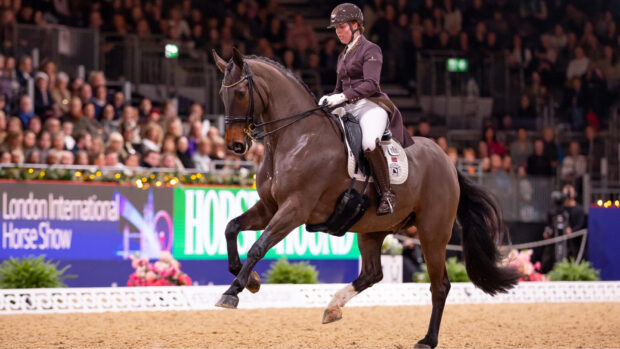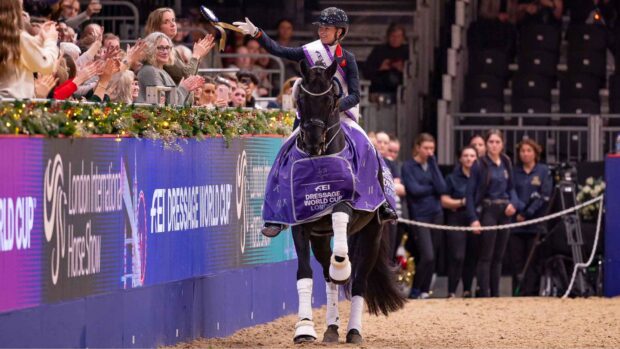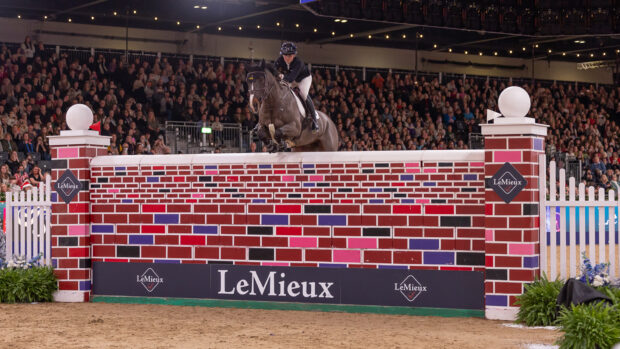Riders will tolerate a lot in the name of Olympic glory, from flash floods and stifling heat to jet lag and volcanic terrain. We take a look at some of the most inhospitable weather conditions riders have had to face through history
Past Olympics abound with tales of flooded courses, volcanic terrain and horses dying in transit. Stifling temperatures in Barcelona 1992 provoked a four-year study into the effects of heat and humidity — leaving a lasting legacy in how we cool horses today — while in Mexico City 1968 riders collapsed due to the high altitude only a week before the event.
So what have our great riders of the past suffered in the name of Olympic glory?
Mexico City, 1968

Mexico City 1968 is the only Olympics to have been held at altitude. Team GBR was brilliantly prepared, with riders taking pills to help them cope with the thin air, and horses flying out three weeks before.
Jane Holderness-Roddam, an eventing team gold medallist, says: “We were way ahead of our time.”
“Our team vet, Peter Scott Dunn, made the horses wear aluminium shoes so as not to carry extra weight,” she says. “And while other horses were getting colic with the different water, we’d brought a water filter.”
As Britain’s first female Olympic rider, Jane was told to be “particularly fit”. “I ran five miles a day, and did 800 skips on the hospital roof where I worked as a nurse,” she says. “I was chuffed to see big men collapsing out on runs, while I was OK — though we were all affected by the altitude.”
Showjumper David Broome, also riding in Mexico, did suffer the effects of 30% less oxygen in the air.
“We had a practice event a week before, and I collapsed two fences from home,” he says. “But we improved as the week went on.”
In fact, it was the weather that proved most significant. Although the climate at the cross-country site in Valle de Bravo was mild, the intense seasonal rainfall during the Olympics was not factored in.
“It rained every day at 1.30pm, except on cross-country day when it started raining buckets at 10.30am,” says Jane. “I went before it was really flooded, but still had two falls where my 14.3hh couldn’t manage the false ground — a crust on top of squelch.
“Only three teams finished — the course caused carnage. One water jump spread from 12ft to 40ft; you could only see flags in a sea of water. The horses had to splosh through until they fell in a ditch, so we earlier riders planted sticks where they were supposed to take off and we were pulling horses out. It was great camaraderie, but it would never have been allowed to continue nowadays.”
Barcelona, 1992

Most Olympic cities have been warmer than Britain, but Barcelona 1992 was dangerously hot. Two horses collapsed, and with the even hotter and more humid Atlanta on the horizon four years later, a team of experts was summoned.
David Marlin, who led the research project funded by the International Olympic Committee and the FEI, says: “Barcelona was a wake-up call; it was lucky there were no fatalities. Horses were finishing cross-country with temperatures off the range of the thermometer, over 41°C. We needed to find out the key to what would be reasonable to ask of horses given the expected conditions.”
Dr Marlin’s research led to the now ubiquitous “aggressive cooling” with iced water, and partially acclimatising horses at home by training in rugs and at the hottest part of the day.
Atlanta, 1996

For Atlanta, the Wet Bulb Globe Temperature (WBGT) index was developed, which takes into account the interaction of temperature, humidity, sunlight and wind to give a number. If it’s under 28, horses should not be adversely affected by heat, while above 33 means “conditions are incompatible with safe competition”. Barcelona was around 28; Atlanta was 30, which meant that two loops were removed from the course in deference to the conditions.


You may also be interested in…

44 fun Olympic equestrian facts from youngest to oldest and so much more…

Subscribe to Horse & Hound magazine today – and enjoy unlimited website access all year round
Horse & Hound magazine, out every Thursday, is packed with all the latest news and reports, as well as interviews, specials, nostalgia, vet and training advice. Subscribe today and enjoy the magazine delivered to your door every week, plus unlimited website access and digital versions of the magazine dating back to September 2012.



